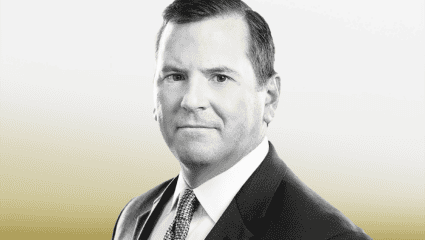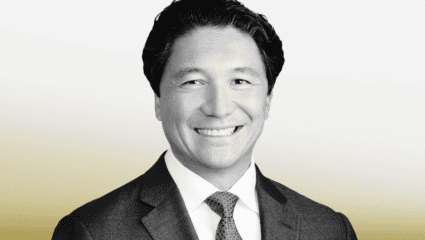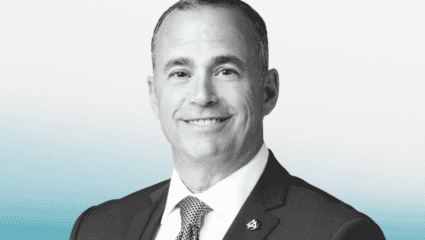
For much of 2023 private credit has kept its doors open for M&A. But the asset class has also carried over its caution from the second half of last year amid economic uncertainty and a tighter fundraising environment.
Firms have lowered hold sizes and increased loan prices as they lean toward smaller transactions, team up with other lenders on deals, shy away from unfunded debt and turn up scrutiny on business performance.
Still, cash-rich private credit can bypass rating agency requirements and syndication to close transactions quickly and put up more money compared to traditional banks. That’s made these firms more attractive to sponsors and sellers, giving the asset class an upper hand in setting buyout terms.
“Credit funds have become the go-to for financing—they can cut big checks and raise money with relative ease with a track record,” said Joe Stein, managing director at Solomon Partners. “They know they have the advantage.”
Liquidity Crunch
A $400 million credit facility that would have likely been executed by a single creditor or a two-lender club in the first half of 2022 might require between four and six parties to complete the transaction in today’s market.
“While a select few lenders have maintained their hold size parameters, the overwhelming majority of lenders have significantly reduced their check size in response to the drop off in redemptions and repayments in their portfolios,” said Joseph Weissglass, managing director at middle market investment bank Configure Partners LLC.
In the core middle market, which typically includes borrowers between $10 million and $50 million in Ebitda, median leverage multiple contracted by about 0.75 times, according to data from Configure. Club deals have become more common as a result.
For instance, Ridgemont Equity Partners‘ January investment in food distributor Worldwide Produce was supported by six direct lenders including Ares Capital Corp., NXT Capital LLC, Kayne Anderson Private Credit, Manulife Investment Management, PNC Erieview Capital and Yukon Partners Management LLC.
The risk-off approach is spilling over to add-ons as well, especially as the latter type of transactions rule the M&A landscape in 2023.
As many private credit firms reduce their hold sizes, borrowers in need of more financing to pursue add-ons must reach out to new lenders to come into the deal, according to Jess Nels, managing director in the capital markets team at Churchill Asset Management LLC.
Structural Shifts
Direct lenders are also less willing to commit unfunded debt, or revolving and delayed draw term loans that borrowers can use at a later date for corporate purposes such as funding add-ons.
Prior to direct lenders tightening their terms, unfunded debt made up about 50% of a financing package, with the rest being funded debt, or term loans paid upfront at the time of closing a transaction. Borrowers typically don’t have to pay interest on unfunded debt until they tap those credit lines.
With lenders choosing to be more careful with their capital, many firms are cutting back on the unfunded portion that leaves them with a block of funds they can neither use for other transactions nor gain any interest on in the near-term.
“As capital availability becomes more limited for direct lenders, delayed draw term loans in particular are becoming smaller in size as part of the overall debt package and with shorter tenures,” Nels said.
Now, borrowers must pay higher interest on a bigger chunk of funded debt than they previously would have and contend with less liquidity for future expenses.
This lower appetite to hold on to committed unfunded delayed draw term loans for borrowers over the last twelve months could negatively impact certain M&A strategies, particularly private equity rollup strategies, Configure’s Weissglass said.
“A borrower seeking incremental unfunded financing in the form of a committed delayed draw term loan to finance future acquisitions, relative to 18 months ago, that DDTL is more difficult to secure,” Weissglass said. “The resistance is a function of the fact that lenders have lower appetite for unfunded commitments and also a function of lowers hold sizes, which is two strikes against you.'”
Most Favored Nation
Even when lenders are willing to commit more financing or a new lender comes into the fold, borrowers must contend with the ‘most favored nation’ clause in the post-easy money era.
Under the clause, a borrower may be required to revise the terms of its financing package with its lender to reflect any favorable terms, such as higher interest rates, that the new lender might receive.
Churchill, for instance, works with borrowers looking for modest incremental financings to keep existing facilities as intact as possible, according to Randy Schwimmer, co-head of senior lending at the firm.
For more substantive increments, repricing the original financing package may be unavoidable, said Schwimmer. But the firm tries to balance “mark-to-market,” which assesses a company’s fair value based on market conditions, with higher borrowing costs.
“Our goal is to balance the needs of our investors to get a fair market return with the needs of our issuer clients to get deals done in a challenging environment,” Schwimmer said.
Churchill, which finances and co-invests in companies with anywhere between $15 million and $75 million in Ebitda, targets high free cash flow and low capex businesses, particularly in non-discretionary sectors such as healthcare and business services.
With delayed draw term loans shrinking and interest rates rising, more sponsors and borrowers are seeking out mezzanine debt after years of unitranche or only senior-debt financing, according to dealmakers.
Mezzanine debt allows companies to pay a portion of interest in the form of additional debt instead of cash through the holding company level payment-in-kind note structure. Borrowers can also raise mezzanine funds without triggering the MFN clause on existing senior debt.
For instance, Minneapolis-based Yukon, a mezzanine debt provider, was part of the six lender group that financed Ridgemont’s investment in Worldwide Produce.
Golden Era
Still, recent bank failures combined with institutional investor enthusiasm for private credit have further cemented the asset class in dealmaking.
Though there are early warnings of potential headwinds from higher interest rates on private debt issued during the 2021 bull market, dealmakers anticipate that direct lenders will continue to take share from banks and capture more investor dollars.
HPS Investment Partners LLC, for instance, closed its second Core Senior Lending fund with $7.3 billion in commitments in June. Meanwhile, in January, Churchill raised $737 million for its second Junior Capital Opportunities fund — more than double its first — and Goldman Sachs Asset Management snagged $15.2 billion for West Street Mezzanine Partners VIII. West Street VII closed with $13 billion in 2017.
“It’s a great time to be building direct lending capabilities,” said Curt Lueker, managing director at Marathon Asset Management LP. “M&A activity has been down to date this year, but we’ve seen a material pickup in deal flow recently and we believe the second half of this year could be very busy for direct lenders.”
Marathon, which tapped Leuker in March to lead the firm’s sponsor coverage and direct lending team, has been fielding calls from sponsors with existing lender groups that have committed as much as possible, looking for additional capital.
“Private credit will be at the core of every institutional investor’s portfolio and at the core of every private equity sponsor’s financing toolkit,” said Schwimmer at Churchill. “It’s like oxygen in the atmosphere — it doesn’t have to be 100% to breathe, but you can’t do without it.”
This Content is Only for The Deal Subscribers
If you’re already a subscriber, log in to view this article here.



